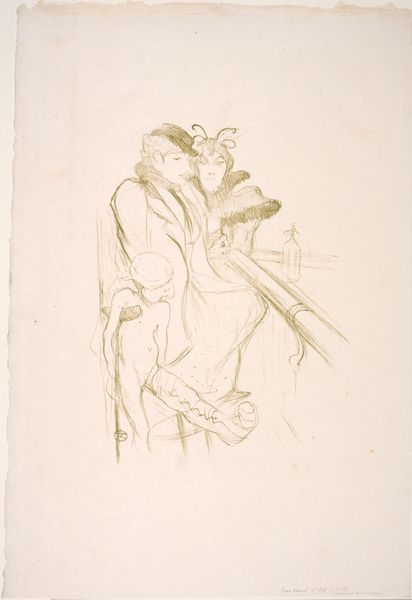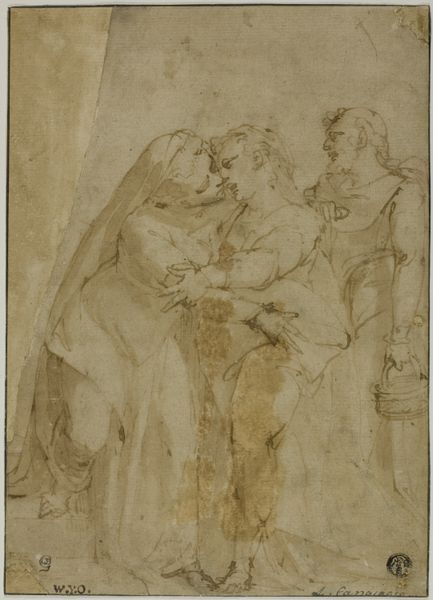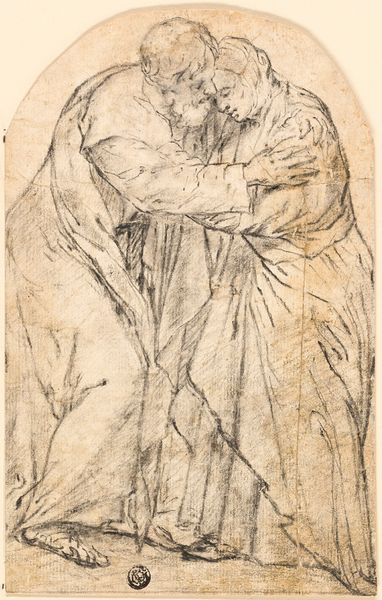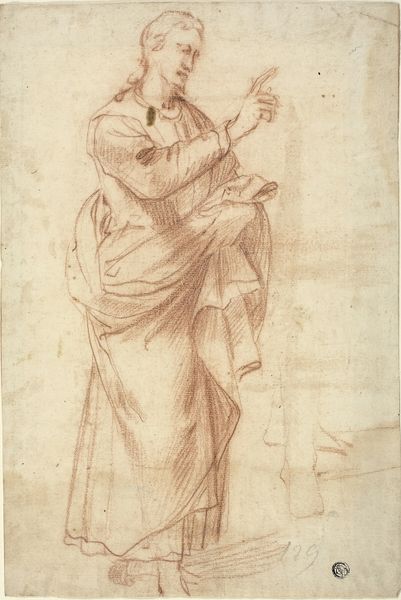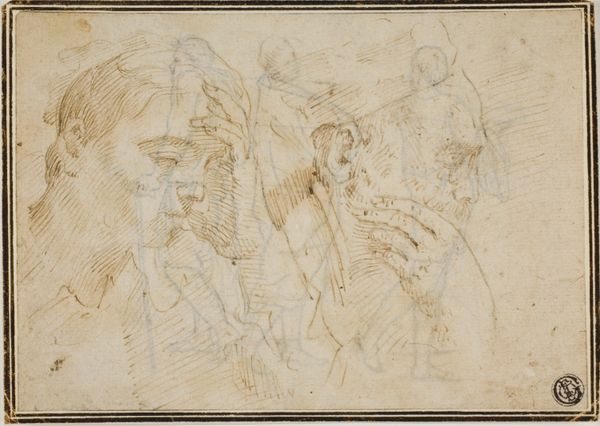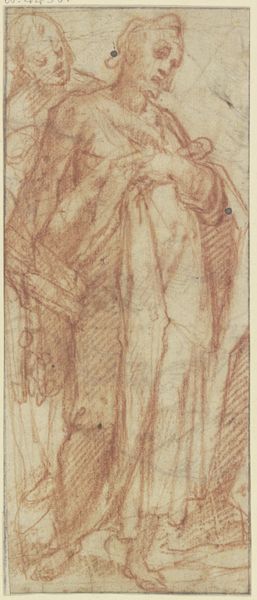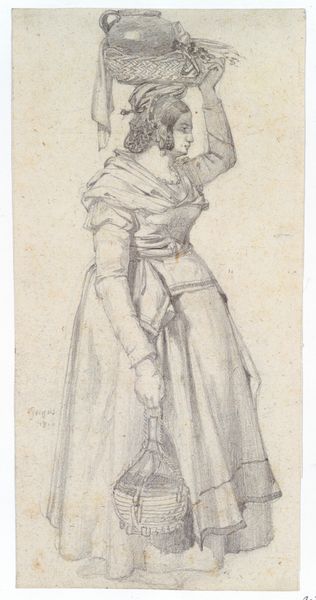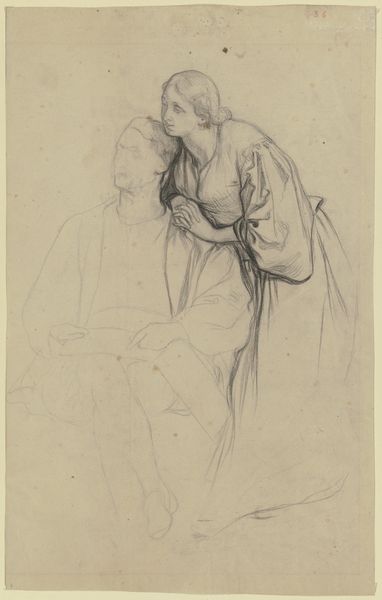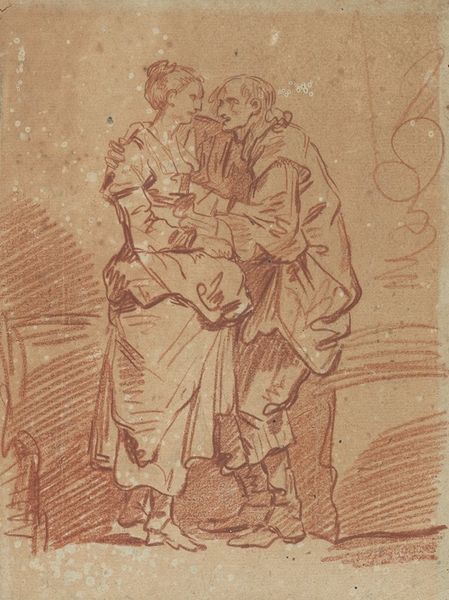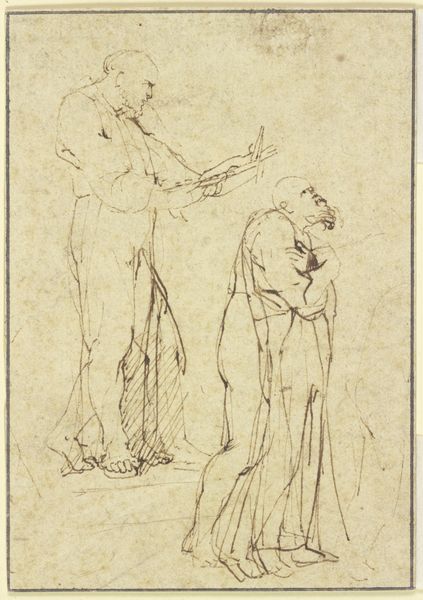
Two Draped Women Standing on Either Side of a Herm 1488 - 1493
0:00
0:00
drawing, coloured-pencil
#
portrait
#
drawing
#
coloured-pencil
#
figuration
#
coloured pencil
#
line
#
italian-renaissance
#
early-renaissance
Dimensions: overall: 19 x 10.2 cm (7 1/2 x 4 in.)
Copyright: National Gallery of Art: CC0 1.0
Curator: Looking at Filippino Lippi’s drawing "Two Draped Women Standing on Either Side of a Herm," created between 1488 and 1493, I’m struck by its potential as a site to explore the construction of feminine virtue in the late Quattrocento. Editor: My first impression is of a quiet, almost hesitant piece. The coloured pencil work is so delicate, almost skeletal; it gives the figures a fragile, ethereal quality. Curator: Precisely. And considering Lippi’s engagement with classical motifs, it raises questions. Are we seeing an idealization of women upholding patriarchal structures, symbolized by the herm, or could there be a more subversive reading, where their gestures hint at resistance against this imposed order? Editor: Interesting point, though the materiality here tells a story of a different kind of power dynamic. The choice of coloured pencil as a medium makes this more accessible, less 'high art,' and more grounded in everyday studio practice. Curator: But it's within those very studio practices, shaped by the patronage systems of the Italian Renaissance, that women’s access to artistic training was often severely limited. How does the drawing, then, reflect this gendered imbalance in the means of artistic production and display? Editor: A valid concern! Looking closer at the details, I can almost feel Lippi experimenting, exploring textures, with delicate cross-hatching which is also a social product that relies on specific access to materials and production conditions. Curator: Exactly, and if we apply a contemporary feminist lens, what can Lippi's choices reveal about the cultural anxieties around female agency and intellectual power during that period? Editor: Perhaps this subtle sketch is testament to both, existing between the social constraint and material possibilities of its era. Curator: Ultimately, Lippi's drawing isn't simply an aesthetic object, but a material artifact embodying the complexities of Renaissance society and gendered experience. Editor: Indeed. It invites us to examine the intersection between artistic expression and the tangible realities of its production and consumption.
Comments
No comments
Be the first to comment and join the conversation on the ultimate creative platform.
